All the Fashion Movies, Books, TV Shows, and Documentaries to Check Out While You Socially Distance
We get it: when you're stuck at home, it's hard to summon the energy to watch much more than something comforting on Netflix. But! These next socially-quarantined weeks also represent an opportunity to dive deep into the weird world of fashion we cover every day—and while designers put their work on pause, there are plenty of ways to engage with them and their work. To help you pass the time, we've pulled together a handful of the GQ style and fashion team's favorite fashion movies, books, documentaries, and TV shows. Designer docs, business books, weird novels, old TV shows, and all the rest—and best of all: you can watch them all in sweats.
Movies
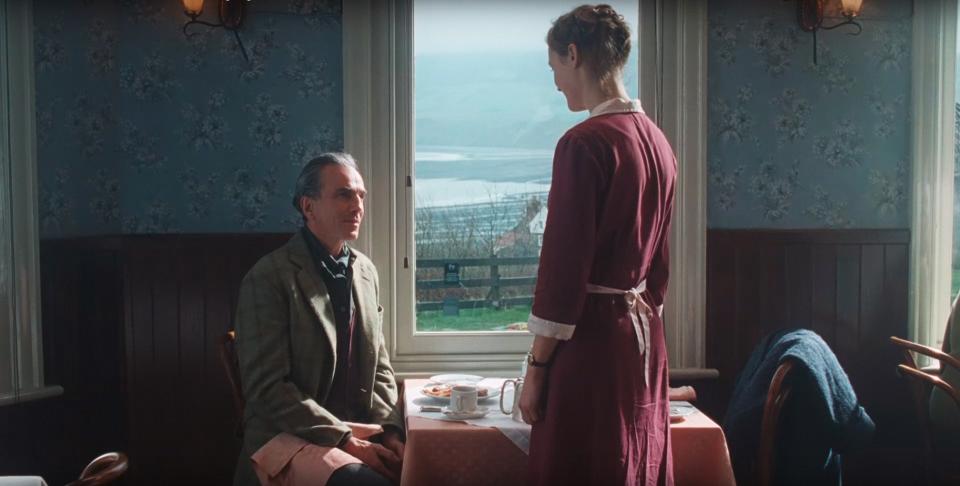
MCDPHTH EC031
Phantom Thread
Paul Thomas Anderson's super-sharp portrait of the relationship between one egomaniacal control-freak designer, played by Daniel Day-Lewis (!), and his muse. For the role, Day-Lewis learned how to sketch, cut fabrics, sew, and deliver withering lines like, "Were you sent here to ruin my evening and possibly my entire life?" A great film, and a really beautiful one at that. —Cam Wolf, style features writer
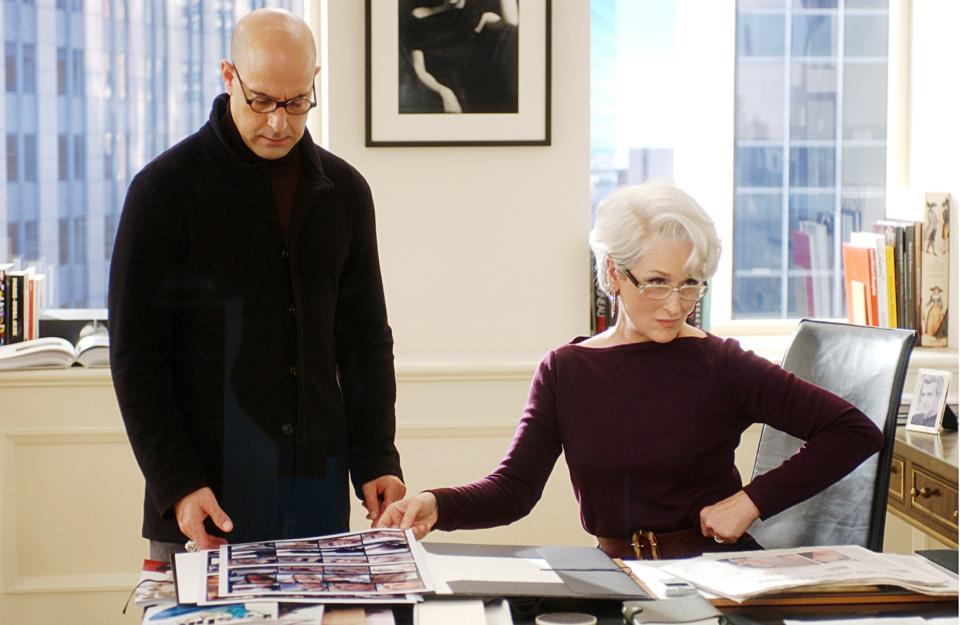
THE DEVIL WEARS PRADA, Stanley Tucci, Meryl Streep, 2006, TM and Copyright © 20th Century Fox Film C
The Devil Wears Prada
I know it sounds cliché, but The Devil Wears Prada really and truly is one of the best fashion films out there. "Homely girl" arrives in NYC? Check! Makeover scene? Check! Scathing one liners that let everyone know exactly where they are in the pecking order? Check! Come-to-Jesus moment in couture? What's not to love? Watch it. Wash your hands to the cerulean monologue. —Nikki Ogunnaike, deputy fashion director
Ready To Wear
Robert Altman’s satirical swan dive into the world of Parisian fashion is a little too quirky to be something like the thinking man’s Devil Wears Prada, so think of it more like a whodunnit plunked in the middle of a runway cartoon and you’ll enjoy it a lot more. Plus, it comes with a free side dish: all the contemporaneous pieces from the New York Times, New York, and the New Yorker about how inaccurately the snipey glamazons felt their universe was portrayed. —Rachel Tashjian, staff writer
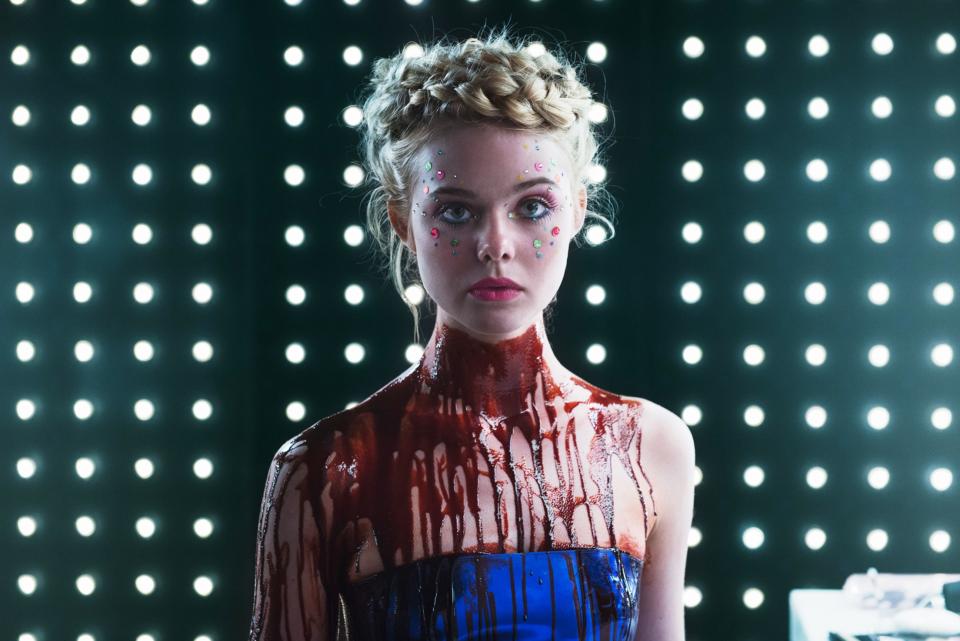
THE NEON DEMON, Elle Fanning, 2016. © Broad Green Pictures /Courtesy Everett Collection
The Neon Demon
Elle Fanning is cast as the epitome of youthful beauty and innocence in Nicolas Winding Refn’s 2016 satire about the high fashion industry in Los Angeles. With highly saturated cinematography, there are enough dewy cheeks, long limbs, and Saint Laurent halters or custom Giles gowns to make your eyes twitch. Add to that palpable dread, obsessive superficiality, and disturbing jealousy, most of it courtesy of the veteran models in Fanning’s orbit (mostly played by actual models). And don't miss Keanu Reeves as a motel manager—of the questionable character sort, for very different reasons. It’s a wild ride, with a gory twist at the end will leave you queasy, so leave the snacks for after. Much after. —Codie Steensma, deputy managing editor
Personal Shopper
In Personal Shopper, Kristen Stewart plays the titular personal shopper for a famous supermodel. But things, plot-wise, quickly go off the rails from there. Stewart's character is also a twin. But her twin brother just died. And she starts receiving mysterious text messages. Suddenly, the supermodel she works for is found murdered! This is one of those movies that you really could say Has Everything: Stewart, capital-F fashion, shopping, evil spirits, and murder. —C.W.
Funny Face
If you liked D.V. (see below!), now see the musical she inspired! —R.T.
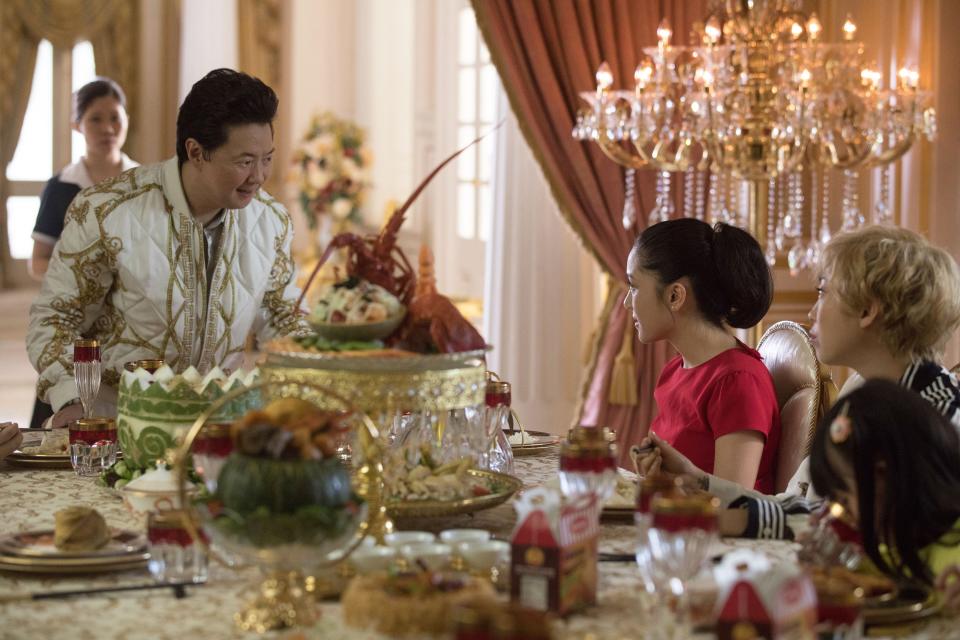
MCDCRRI EC037
Crazy Rich Asians
Not only is Crazy Rich Asians a clever and heartwarming story about family and friendship, the costumes are next level. It’s the rare regular film that transcends its genre to become a true Fashion Film. Gemma Chan is a vision in just about everything she wears, while Constance Wu kills it in the quintessential makeover scene. And then there's Awkwafina's wig—a sight to behold. —N.O.
My Best Friend’s Wedding & American Gigolo—aka The Armani Double Feature
There are many eras within the minimalist hagiography of Armani, but one standout moment in cinema is, of course, American Gigolo, in which Armani suits practically formed a love triangle with Lauren Hutton and Richard Gere. This was when Armani was not yet a global name, and watching Gere muscle into those suits still looks fresh today. But a second and less appreciated Armani moment is My Best Friend’s Wedding, in which Julia Roberts, a woman driven practically mad with jealousy and more when her best friend gets engaged to a peppy, preppy Cameron Diaz, spends most of her time onscreen wearing men’s suits by the Italian master. This will show you unstructured! —R.T.
Books
Scenes From the Fashionable World and The Fashionable Mind, by Kennedy Fraser
Kennedy Fraser seems to have emerged fully formed as a fashion writing savant, starting her career just out of college at the New Yorker under the velvet hammer of editor William Shawn. She reported on skirt lengths, the new designers at Bendel’s, and the arrival of Japanese fashion in Europe with the urgency and exactitude of a war reporter, and many of her essays and columns are collected in these two books. Standouts include a sparky profile of society photographer Norman Parkinson and an evening with Karl Lagerfeld as he judges a “Handsome Man” contest in Midtown New York. —Rachel Tashjian, staff writer
Pattern Recognition, by William Gibson
Pattern Recognition is a novel about a marketing savant named Cayce Pollard who is tasked with investigating the origin of a series of transfixing video clips that appear on the internet. It is also a novel about clothes. Pollard’s world is populated by niche Japanese brands, her dreams haunted by zippers and nylon fabric. Allergic to brands, her taste in clothing is so hyper-specific (relatable!) that she is basically incapable of wearing anything but her trusty black Buzz Rickson’s MA-1 jacket. Gibson is a famous clotheshorse and Acronym stan, and it’s downright charming to track his niche obsessions—this was published in 2003, way before it was cool to have debates with your bros about Yohji’s early collections—throughout the pages of a bestseller. It also makes me wonder whether one of Gibson’s most prescient sci-fi predictions was the rise of hypbeast culture. —Samuel Hine, associate style editor
D.V., by Diana Vreeland
There are many books (and a great doc!) on the O.G. fashion editor Diana Vreeland, but her memoir is the best of the bunch, opening with a story about seeing the “Mona Lisa” get stolen from the Louvre as a young girl and closing with a crazed and wonderful rumination on how to walk. Witty and weird and spans nearly a century of popular culture (Buffalo Bill and Mick Jagger!). —R.T.
Ametora: How Japan Saved American Style, by W. David Marx
Anyone who has traveled to Tokyo—or scanned the racks of a Union Los Angeles or Blue In Green—knows that Japan has adopted (and perfected) American fashion. In Ametora, natty scholar W. David Marx explains in nerdy and fascinating detail how this assimilation process has unfolded over the past 150 years—and how it reshaped how Americans dress along the way. —S.H.
The Beautiful Fall, Alicia Drake
The Beautiful Fall is as entertaining as any novel could hope to be: it follows two power-hungry protagonists—in this case, Karl Lagerfeld and Yves Saint Laurent—on their upward starcrossed trajectories through the high-glamour and insular world of fashion. —C.W.
Bare Blass, by Cathy Horyn
Bill Blass was the first American womenswear designer to introduce a dedicated menswear line, way back in 1967. Come to deepen your understanding of why the American fashion system looks the way it does today. (I mean, Bill Blass put his name on a car in the ’70s!) Stay for the colorful stories gathered by Cathy Horyn from Paris Fashion Week and Blass’s glittery socialite circles. —S.H.
Deluxe and Fashionopolis, by Dana Thomas
On the one hand, the history of the last decade in fashion is a glorious kind of globalization, a story of an elitist industry opening its doors to new talents, faces, and body types, and transforming cosseted events into worldwide spectacles. On the other hand, it is a story about the conglomeration of brands, the new and overwhelming power of marketing over creativity, and the seemingly unstoppable domination of fast fashion. Dana Thomas covers these topics in Deluxe and Fashionopolis; the latter, which focuses on fast fashion, came out earlier this year and is a must-read for anyone with even a casual interest in fashion. Her 2015 book Gods and Kings, on Alexander McQueen and John Galliano, is also a must-read for real fashion heads (or people who love wild, genius personalities.) —R.T.
Supremacist, by David Shapiro
Supremacist by David Shapiro is a loosely autobiographical coming-of-age novel in which our protagonist, David, finds himself by visiting every Supreme store in the world, chomping pills and getting wasted along the way. The prose is simple and the characters abject, and it includes some of the sharpest analysis of Supreme’s magic—what makes the brand cool, why it inspires such fanatic devotion—you will read. —S.H.
Documentaries
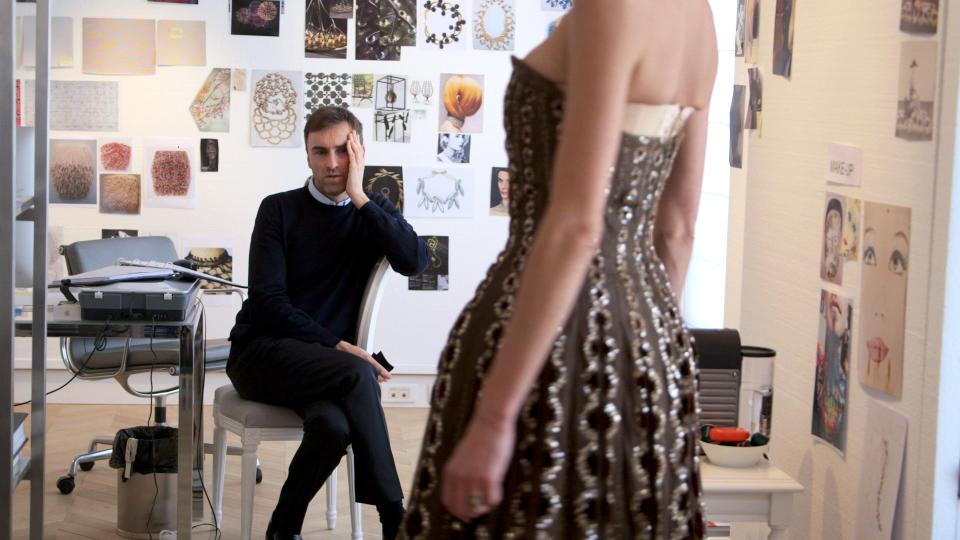
DIOR AND I, Raf Simons, 2014. ©The Orchard/courtesy Everett Collection
Dior and I
The documentary drops you into the Dior atelier just as Raf Simons has taken the reins of the house in 2011. There's an extra bit of electricity as the designer is forced to design an entire collection in just eight weeks. The documentary closely follows one of fashion's most beloved designers during this harried creative process. —C.W.
Unzipped
Fashion documentaries have become a big-time marketing tool for brands hoping to give their designers a Raf Simons-level aura, but in the early ’90s, a lot of access and a brilliant subject was motive enough to roll the cameras. Unzipped opens with Isaac Mizrahi stopping by a newstand (!) to pick up a print copy of WWD (!!) and feeling bereft at a pan of his latest collection (!?!). Off we go into designing a crackling, “I’ll show ‘em” collection, with this total fashion savant having tea with Eartha Kitt, taking phone calls about the importance of having the right dog for your clothes, and hanging with the ingenues of the ’90s New York fashion scene, like the magnetic Polly Mellen and the incandescent Ingrid Sischy and the bizarre and magical Linda Evangelista, not to mention the force of nature that is Sandra Bernhard. Mizrahi embodies the notion that clothing is the perfect medium for making mischief. —R.T.
Fresh Dressed
With some help from Kanye West, Pharrell, and Diddy, Fresh Dressed tracks hip-hop's deep and abiding influence on the world of fashion. Director Sacha Jenkins draws a straight line between '70s fashion in the Bronx to current-day style icons like A$AP Rocky. —C.W.
McQueen
I never quite clocked Alexander McQueen's madcap gothic influence until I saw this documentary, and I don't the fact that I watched it on a plane was the only reason I started weeping. McQueen is that rarest of fashion commodities: a through-and-through designer, a master sketcher, a wizard with fabric, someone who bleeds with love for the medium. If you don't "get" fashion, this is a great place to start. —Sam Schube, senior editor
Sole Man
An in-depth look at one of the sneaker world's most influential behind-the-scenes movers and shakers. Sonny Vacarro is the reason powerful institutions like Jordan Brand exist (he helped Nike sign Jordan in the '80s) and he's responsible for now-widespread practices like signature sneakers. —C.W.

Very Ralph
When all seems to be crumbling, there is something calming about a meticulously tailored suit. From putting one on just to take calls from home, to re-watching Very Ralph, Susan Lacy's documentary about suit (and lifestyle) god Ralph Lauren, I’ve come to realize that a suit still has the potential to ground me…pinstripes, antique buttons, cuffed trousers, blazers, and all. —Willa Bennett, senior manager, social media
TV Shows
Project Runway
Project Runway is two seasons into its rebooted format—Karlie Kloss taking over for Heidi Klum, and Christian Siriano for Tim Gunn—but it's purring like a newly oiled machine, rather than the 18-season long behemoth it actually is. This year's run of episodes is the best it's been in years: insane corporately sponsored challenges (yes, that includes a Cats episode! NBC Universal synergy, come through!); some of the most talented designers I've ever seen on screen (like Nancy Volpe-Beringer, a 64-year-old contestant who pivoted to fashion much later in life but is churning out truly stunning, work-of-art-level pieces on the runway); and the strongest judging panel around right now. The lone holdover, Elle's Nina Garcia, remains a gem, but newbies Kloss (warm but sharp when needed), Brandon Maxwell (get him a late-night show), and Siriano (the small screen's best host) make Project Runway's 18th season nothing short of must-see TV.—Brennan Carley, associate editor
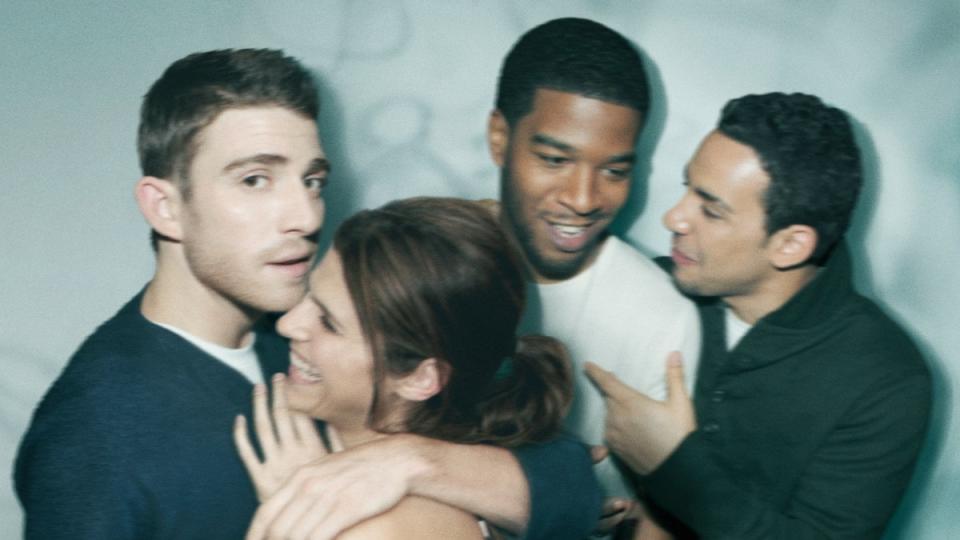
How to Make It in America
The world, we’re realizing, used to be a simpler place. So did menswear. Before we were all wearing loafers and tie-dye and figuring out where suits fit into the whole mess, most of us menswear enthusiasts started in one place: with a pair of raw denim jeans. That’s where HBO’s short-lived, preposterous, frankly kind of wonderful How to Make It in America started, too—with two buddies scrapping their way toward a life in premium denim. At the time, it was popular to call the show Entourage, but Streetwear. Now, though, it looks a little more like Friends in A.P.C. —S.S.
Originally Appeared on GQ

